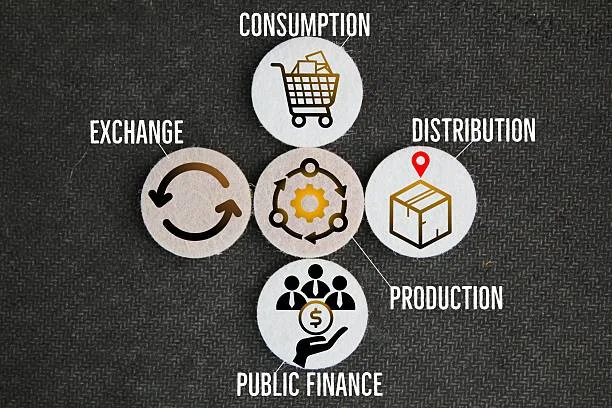TECHNOLOGY
Interoperability Solutions Every Blockchain Developer Needs to Know About

The global blockchain market was estimated at $7.4 billion in 2022 and is expected to reach $94 billion by the end of 2027. Blockchain technology, due to its enhanced security, transparency, and decentralization, has been a significant alteration in the domain of digital systems. However, blockchains are detached networks that do not readily connect; this makes it difficult for developers to produce systems that are smooth and linked.
This is the reason why we need interoperability solutions as they allow various blockchains to communicate and work together. If you are a blockchain developer who desires to construct flexible and robust applications, it becomes crucial to understand these solutions.
In this article, we will explore some of the most important methods for interoperability that every blockchain developer should know about.
Inter-Blockchain Communication (IBC)
Inter-Blockchain Communication is a technique that enables different blockchain networks to interact and transfer information and assets between chains. With IBC, developers can build applications that leverage the capabilities of multiple blockchains, enhancing functionality and user satisfaction. For instance, building with IBC protocol facilitates efficient operations by allowing blockchains to exchange information and assets directly, without the need for an intermediary.
IBC functions by creating a common language system, or protocol, which can be taken up by various blockchains. It employs smart contracts and cryptographic proofs to guarantee secure and dependable data transfer. For developers, IBC reduces fragmentation in the blockchain space, enabling more cohesive and integrated decentralized applications (dApps). The design of this protocol is focused on being flexible, safe, and adjustable for different blockchains, which makes it an important foundation for the growing world of interoperable blockchain systems.
Layer-0 Protocols
Layer-0 protocols serve as the foundational layer for many blockchain networks, ensuring fundamental operational functionality. Different from Layer-1 protocols, which deal with methods of agreement and handling transactions, Layer-0 protocols are set to back up the infrastructure that connects various blockchains together. Examples of Layer-0 protocols include Polkadot and Cosmos, which are designed to establish a network of interoperable blockchains.
For example, Polkadot has a main chain called a relay chain. It links with different parachains, which are independent blockchains within its system. This type of structure enables communication and exchange of data across chains, making it simpler for developers to construct applications that work together.
In the same manner, Cosmos uses a hub-and-spoke pattern where various blockchains or zones link up with one central hub to enable smooth interoperability between them. The use of Layer-0 protocols allows developers to make blockchain solutions that are more flexible and connected, getting past the restrictions of separate blockchain networks.
Atomic Swaps
Atomic swaps are very important as they solve the issue of interoperability between different blockchain networks, especially for cryptocurrency exchanges. With an atomic swap, users can directly exchange their cryptocurrencies on separate blockchains without having to use a centralized exchange. This is possible because smart contracts make sure that the transaction will be either fully finished or returned completely; this eliminates any risk related to one party not following through with its part in the agreement.
The main benefit of atomic swaps is that they make possible trustless trading between various blockchain networks. For developers, the use of atomic swaps can improve safety and effectiveness in decentralized exchanges (DEXs), as well as other financial applications. By allowing direct trading between two users, atomic swaps reduce the need for centralized middlemen, decrease the costs of transactions, and speed up deals. This is why they are very useful for developers who want to create safer and faster finance programs in the blockchain environment.

Sidechains
Sidechains are separate blockchains that work next to a main blockchain (mainnet). They aim to improve how different blockchains can work together and increase their capacity for handling transactions. These sidechains enable the transfer of assets or data between the main blockchain and an additional chain, referred to as a “sidechain.” It’s also possible to send these items from one place on the mainnet into another area within this parallel chain.
This technique allows developers to take off certain tasks or applications onto the sidechain while still keeping a connection with the primary network. This action not only improves interoperability but also assists in reducing overloading upon the primary blockchain.
Developers can use sidechains to create intricate dApps in a flexible and expandable way. Sidechains let developers test out different features, agreement algorithms, and administration types without causing problems for the mainnet’s steadiness. Also, you can personalize sidechains for particular uses like growing transaction speed or establishing privacy elements. Developers seeking to expand the possibilities of blockchain technology can benefit from this adaptability.
Bridges
Blockchain bridges are a very important way to achieve interoperability. They link up various blockchain networks and allow for the movement of assets and information between them. Bridges, unlike sidechains that work alongside mainnets, directly link two or more separate blockchains together, making communication possible across chains. For example, the Ethereum-Polygon bridge enables users to move their assets between the Ethereum mainnet and Polygon sidechain. These bridges may be centralized or decentralized; the second option is more secure and lacks trust in authorities.
Bridges provide a simple method for developers who wish to combine various blockchain networks in their applications, hence creating more possible uses. By utilizing bridges, developers can combine the strengths of different blockchains, such as Ethereum’s smart contract capabilities and Polygon’s high transaction throughput, to create more versatile and robust dApps.
Bottom Line
To thrive in the changing landscape of blockchain, developers need to comprehend available solutions and prioritize interoperability. They can ultimately enhance their applications, making them more flexible and interconnected by utilizing these solutions to overcome isolated network limitations. In the blockchain industry, staying up-to-date on such advancements is crucial for spearheading innovation and integration.
TECHNOLOGY
Your Access, Upgraded: The Professional Benefits of RM1.to

In today’s fast-paced digital economy, professionals are constantly seeking tools that streamline workflow, increase efficiency, and maintain security. One platform that has been gaining attention in the online workforce community is rm1.to. Designed to provide secure and efficient access to specialized digital services, rm1.to is redefining how professionals work, collaborate, and manage tasks in a digital-first environment.
Simplified Access for Professional Tasks
One of the standout benefits of RM1.to is its focus on streamlined access. For many professionals, managing multiple digital tools, accounts, and permissions can be a time-consuming and error-prone process. RM1.to addresses this by offering a centralized platform where users can quickly access the services they need.
Whether it’s specialized data work, content creation, or technical support, RM1.to ensures that professionals can connect with verified service providers efficiently. By eliminating the usual friction associated with task assignment, approval, and payment, users can focus on productivity rather than administrative hurdles.
Enhanced Security for Peace of Mind
Security is a top priority in any professional setting, and RM1.to integrates it as a core feature. Traditional methods of managing access and digital collaboration can leave sensitive information exposed to risk. RM1.to mitigates this with built-in protections for both clients and service providers.
For professionals, this means confidence in every interaction. Payments are securely handled, services are verified, and access is monitored to prevent unauthorized use. The platform’s focus on transparency and accountability ensures that tasks are delivered reliably, reducing disputes and creating a trustworthy environment for all users.
Efficiency That Supports Growth
Another major benefit of RM1.to is its ability to support fast, efficient workflows. In the modern digital workforce, speed is often as critical as accuracy. RM1.to allows professionals to delegate micro-tasks quickly without worrying about complex onboarding or verification processes.
By combining rapid access with secure, verified transactions, the platform allows individuals and teams to scale their operations efficiently. Professionals can take on more projects, meet deadlines faster, and maintain high-quality standards—all without compromising security or accountability.
Flexibility for Diverse Professional Needs
The versatility of RM1.to is another reason it appeals to professionals. The platform is not limited to a single industry or type of task. From creative projects and technical support to data analysis and research, RM1.to can accommodate a wide range of professional requirements.
This flexibility enables professionals to adapt to evolving workloads, delegate tasks efficiently, and access specialized expertise on-demand. The platform acts as a bridge, connecting users with services that would otherwise require time-intensive searches or additional hires.
Building Trust Through Transparency
Trust is essential in any professional relationship, particularly in digital environments where users may never meet in person. RM1.to fosters trust through clear service descriptions, structured workflows, and feedback mechanisms. Both clients and service providers can review performance and maintain accountability, which strengthens collaboration and minimizes misunderstandings.
For professionals, this transparency not only ensures reliability but also allows them to make informed decisions when choosing services or partners. The platform’s structure encourages ethical practices and responsible usage, creating a professional ecosystem built on trust.
Conclusion
RM1.to offers a combination of security, efficiency, and flexibility that makes it a valuable tool for today’s digital professionals. By simplifying access, ensuring secure transactions, supporting scalable workflows, and fostering trust, the platform enables users to focus on what truly matters: delivering high-quality work and achieving professional goals.
In a world where digital tasks are growing in complexity and volume, RM1.to represents a meaningful upgrade in how professionals manage their work. Its features provide the support, speed, and reliability needed to thrive in a competitive digital workforce, making it a go-to platform for those seeking secure and efficient access to specialized services.
TECHNOLOGY
The Power of Curation: Ultimateshop’s Quality-First CC Strategy

In the digital world, access to information is only valuable when it is accurate, relevant, and well-organized. For platforms dealing with credit card (CC) data, this principle is even more critical. Raw data dumps may contain enormous amounts of information, but without proper curation, their utility ultimateshop is limited and their reliability questionable. ultshop.mobi has distinguished itself by adopting a quality-first strategy, using careful curation to transform large datasets into actionable, trustworthy resources quality-first CC.
The Limitations of Raw Data
Many platforms prioritize volume over precision, offering massive collections of CC information that are often outdated, duplicated, or poorly formatted. While this approach may appeal to users seeking large datasets, it comes with significant drawbacks. Errors, inconsistencies, and irrelevant entries increase the risk of flawed analysis or inefficient workflows. For developers, researchers, and testers, these issues mean extra time spent cleaning and verifying data, reducing productivity and increasing the potential for mistakes.
Ultimateshop recognized that the key to meaningful value is not simply the quantity of data but the quality. By prioritizing accuracy, organization, and usability, the platform provides users with curated datasets that are ready for immediate, reliable use quality-first CC.
Curation as a Core Strategy
At the heart of Ultimateshop’s approach is curation—a deliberate process of selecting, verifying, and refining data to ensure it meets strict quality standards. Every CC entry is evaluated for validity, accuracy, and relevance before inclusion. Duplicates are removed, formatting is standardized, and outdated or invalid entries are filtered out.
This rigorous curation process ensures that users receive datasets they can trust. Rather than sorting through thousands of questionable entries, users can focus on applying the information to research, testing, or legitimate project work. The curated approach turns potentially chaotic datasets into structured, usable resources.
Enhancing Usability Through Organization
Quality-first curation goes beyond validation—it also emphasizes organization and accessibility. Ultimateshop structures data in a way that is intuitive and user-friendly. Categories, tags, and consistent formatting make it easy to navigate even large datasets quality-first CC.
This thoughtful organization saves users significant time and reduces the risk of errors. For tasks that require precision and speed, such as testing payment systems or analyzing trends, the ability to access well-structured, reliable data is invaluable. Ultimateshop’s curated lists are not only accurate—they are actionable.
Trust and Reliability as Key Differentiators
In an industry where credibility is crucial, Ultimateshop’s quality-first strategy establishes trust. Users can rely on the platform to deliver accurate, up-to-date information without the frustration of sifting through unreliable entries. By emphasizing curation, Ultimateshop ensures that its datasets are consistently dependable, setting it apart from competitors that focus solely on volume.
Furthermore, this commitment to quality supports ethical and secure usage. Curated, verified data minimizes the risk of errors that could lead to misuse or security vulnerabilities, aligning the platform with responsible digital practices quality-first CC.
Continuous Improvement and Adaptation
Ultimateshop’s strategy is not static. The platform continuously updates and refines its curated datasets, incorporating new information while removing outdated entries. This dynamic approach ensures that users always have access to relevant, accurate data, allowing the platform to adapt to evolving needs and maintain its high standards over time.
Conclusion
Ultimateshop demonstrates the transformative power of curation in the CC data space. By prioritizing quality over quantity, verifying entries, organizing information effectively, and maintaining ongoing refinement, the platform provides reliable, actionable datasets that enhance efficiency and trust.
TECHNOLOGY
The Hidden Pathways of Vclubshop’s Digital Marketplace

In today’s interconnected world, the digital underground has become a sophisticated ecosystem where stolen data, illegal services, and cybercrime tools are exchanged. Among the platforms that have emerged in this shadowy landscape is vclubshop, a marketplace known for facilitating the trade of compromised data and other illicit digital goods vclub shop. Understanding how such marketplaces operate can help individuals and organizations strengthen their cybersecurity posture and respond effectively to emerging threats.
1. Exploring the Structure of Vclubshop
Vclubshop functions similarly to a legitimate e-commerce platform, but with an illicit purpose. Its structure includes several key elements:
Product Listings – Stolen data, including login credentials, payment information, and personal identity records, is organized for sale.
Seller Ratings and Reviews – Like legal marketplaces, buyers assess sellers based on feedback and reputation, which fosters trust in an otherwise anonymous environment.
Secure Transactions – Cryptocurrencies are typically used to maintain anonymity and reduce the traceability of purchases.
Anonymity Tools – Users often rely on VPNs, encryption, and other privacy measures to avoid detection by authorities.
By mimicking the structure of legitimate marketplaces, platforms like Vclubshop create a sense of order that allows illicit transactions to occur efficiently.
2. The Lifecycle of Data in the Marketplace
Stolen data rarely remains isolated; it passes through multiple stages before reaching end-users:
Acquisition – Hackers obtain data through breaches, phishing, malware, or social engineering.
Verification and Packaging – Data is often checked for validity and organized into packages for sale.
Marketplace Listing – The verified data is uploaded to platforms like Vclubshop.
Purchase and Exploitation – Buyers use the data for identity theft, financial fraud, or account takeovers, or resell it in other underground markets.
This pipeline shows how a single breach can have far-reaching consequences in the digital ecosystem.
3. Why Vclubshop Persists
Several factors contribute to the resilience of underground marketplaces:
High Demand – Stolen data fuels identity theft, fraud, and cyberattacks, creating a continuous market.
- Global and Decentralized Operations – Transactions cross borders, making enforcement and prosecution challenging.
Advanced Anonymity Measures – Cryptocurrency payments and encrypted communication systems protect both buyers and sellers.
These conditions create a marketplace that is difficult to disrupt and continuously adapts to law enforcement efforts.
4. The Risks to Individuals and Organizations
Even if someone is not directly interacting with platforms like Vclubshop, stolen information can impact them indirectly:
Account Compromise – Credentials sold on such marketplaces can be used to take over online accounts.
Financial Fraud – Payment information can be exploited for unauthorized transactions.
Identity Theft – Personal data can be used to create fraudulent documents or access services.
Awareness of these risks is the first step toward prevention.
5. Strategies for Protection
Protecting yourself and your organization from the effects of marketplaces like Vclubshop requires proactive measures:
Use unique, strong passwords for all accounts.
Enable multi-factor authentication wherever possible.
Monitor financial statements and credit reports regularly.
Keep software and devices updated to patch security vulnerabilities.
Educate users and employees about phishing and social engineering attacks.
For organizations, regular cybersecurity audits, network monitoring, and incident response planning are essential to minimizing exposure.
6. Understanding the Digital Underground
While platforms like Vclubshop operate outside the law, analyzing their structure and operations helps demystify the digital underground. By understanding the hidden pathways through which stolen data travels, individuals and businesses can take informed steps to secure sensitive information. Cybersecurity today is not optional—it is a critical part of navigating an increasingly digital world.

 BUSINESS9 months ago
BUSINESS9 months agoBrand Visibility with Imprint Now and Custom Poly Mailers

 HEALTH8 months ago
HEALTH8 months agoHappy Hippo Kratom Reviews: Read Before You Buy!

 LIFESTYLE9 months ago
LIFESTYLE9 months agoThe Disciplinary Wives Club: Spanking for Love, Not Punishment

 ENTERTAINMENT1 month ago
ENTERTAINMENT1 month agoExploring the Kristen Archives: A Treasure Trove of Erotica and More

 HOME IMPROVEMENT9 months ago
HOME IMPROVEMENT9 months agoThe Do’s and Don’ts of Renting Rubbish Bins for Your Next Renovation

 TECHNOLOGY8 months ago
TECHNOLOGY8 months agoDizipal 608: The Tech Revolution Redefined

 BUSINESS10 months ago
BUSINESS10 months agoExploring the Benefits of Commercial Printing

 GENERAL5 months ago
GENERAL5 months ago5 Factors That Affect Tattoo Removal Success












